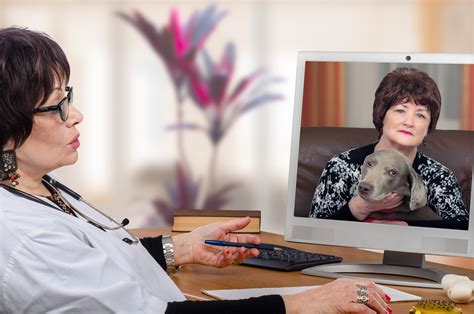Introduction
Veterinary telehealth (vet telehealth), a rapidly growing field, harnesses technology to provide remote veterinary care, offering convenience, accessibility, and specialized support to pet owners and veterinarians alike. As vet telehealth expands globally, the need for international standards to ensure quality and safety becomes paramount. This article explores the current state of vet telehealth and the crucial role of international standards in its growth and innovation.

Current Status of Vet Telehealth
According to the American Veterinary Medical Association (AVMA), over 50% of pet owners in the United States have used or considered using vet telehealth services. The industry is projected to grow exponentially, reaching an estimated value of $11.6 billion by 2025.
Key Benefits of Vet Telehealth
- Convenience and Accessibility: Vet telehealth allows pet owners to consult with veterinarians from anywhere, anytime, breaking down barriers of time and distance.
- Specialized Expertise: Telehealth platforms connect pet owners with specialized veterinarians who may not be accessible locally.
- Reduced Veterinary Shortages: Vet telehealth helps alleviate the shortage of veterinarians by expanding access to care and providing support to rural and underserved areas.
Challenges and Pain Points
Despite its advantages, vet telehealth faces some challenges:
- Variable Quality of Care: The quality of vet telehealth services can vary depending on the provider and platform.
- Regulatory Uncertainty: The absence of clear regulations in some countries can create uncertainty for veterinarians and pet owners.
- Limited Access to Advanced Diagnostics: Remote consultations may limit the availability of advanced diagnostic tools, such as physical exams and X-rays.
The Role of International Standards
International standards play a vital role in addressing these challenges and promoting the adoption of vet telehealth:
- Ensuring Quality and Safety: Standards establish minimum requirements for vet telehealth platforms and services, ensuring they meet a consistent level of quality and safety.
- Facilitating Cross-Border Care: Standards enable harmonization of regulations and practices across countries, facilitating cross-border veterinary care.
- Enhancing Consumer Confidence: Clear standards build trust among pet owners and veterinarians, improving confidence in vet telehealth services.
Key International Standards
Several international organizations are developing standards for vet telehealth, including:
- World Veterinary Association (WVA): The WVA has published “Guidelines for the Use of Telemedicine in Veterinary Practice,” providing principles for the ethical and effective use of telemedicine.
- International Organization for Standardization (ISO): ISO is developing a new standard, “ISO/DIS 11607,” which will provide requirements for veterinary telehealth services and platforms.
Future Applications and Innovations
Vet telehealth holds immense potential for new applications and innovations:
- Remote Surgery: Advanced technologies, such as augmented reality (AR) and robotics, may enable remote surgical procedures.
- Artificial Intelligence (AI): AI algorithms can analyze medical data and provide real-time insights, assisting veterinarians in diagnosis and treatment planning.
- Wearable Devices: Sensors and wearables can monitor pet health and transmit data remotely, facilitating early detection of health issues.
Conclusion
International standards are crucial for the growth and innovation of vet telehealth. By establishing clear requirements and harmonizing regulations, standards ensure the quality and safety of services, build consumer confidence, and facilitate cross-border care.
As technology continues to advance, so too will the applications and innovations in vet telehealth. With international standards as a foundation, this field can revolutionize animal healthcare, making it more accessible, affordable, and effective for pets and their owners worldwide.
What are the benefits of using vet telehealth services?
- Convenience and accessibility
- Specialized expertise
- Reduced veterinary shortages
What are some of the challenges facing vet telehealth?
- Variable quality of care
- Regulatory uncertainty
- Limited access to advanced diagnostics
How do international standards help address these challenges?
- Ensure quality and safety
- Facilitate cross-border care
- Enhance consumer confidence





















